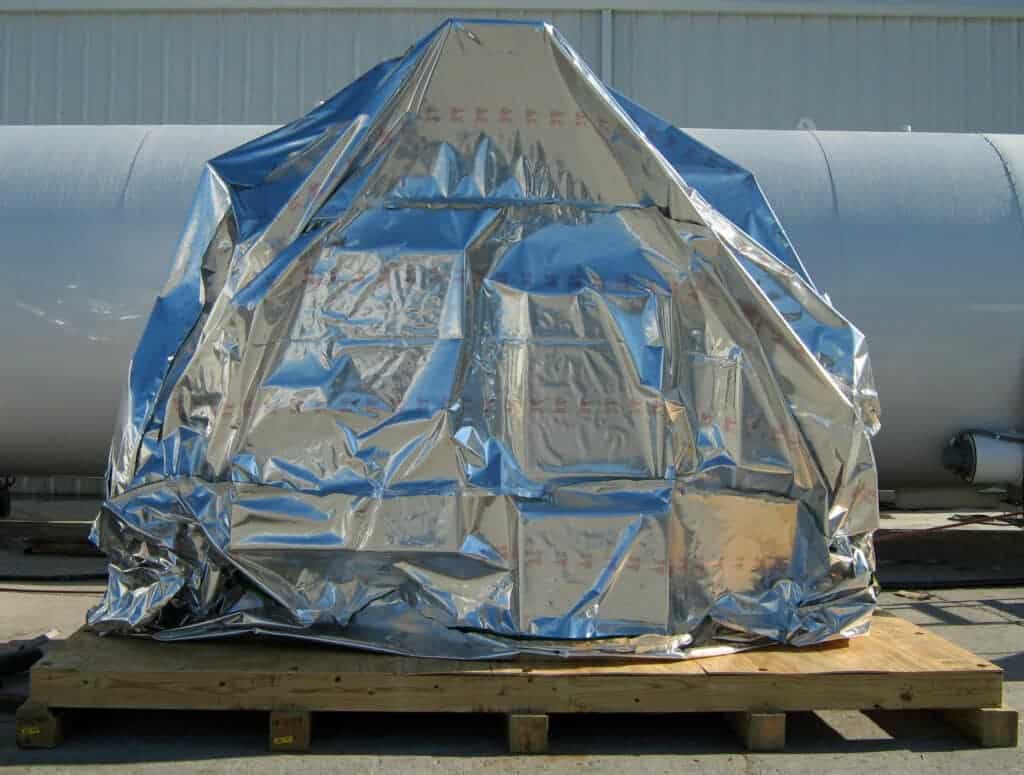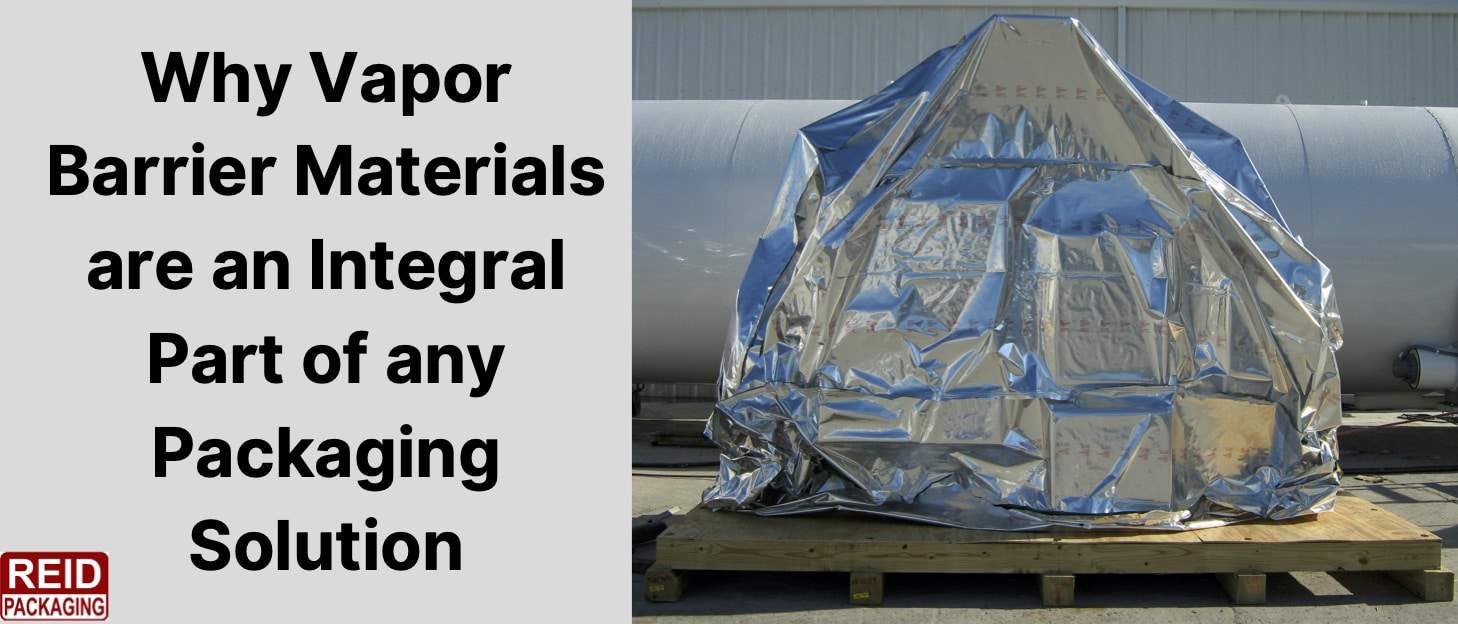Why Vapor Barrier Materials are an Integral Part of Any Packaging Solution
If you’re shipping valuable products long distances then it’s important to understand the harm that moisture can have on your products. Though many understand the need to protect against impact, vibration and crushing, fewer understand that moisture can often be the most harmful element of any transportation journey. Keeping moisture out means working with vapor barrier materials. We tell you all about it in our follow up to the previous article on container rain.
Protecting Against Moisture
Shipping products long distances means that they will encounter different climates. Whether you are shipping valuable electronic equipment by train across the USA, or sending aerospace components by ship to Europe, you can be sure that your product will be exposed to different temperatures and humidity levels, raising the concern that damaging moisture will come into proximity with your valuable products.
One way this manifests is with container rain. Container rain is when moisture in the air condenses as a container passes from one climate to another, causing “rain” inside of a shipping container. Without specific moisture-control measures in place, container rain can cause entire shipments to be lost. [Read the first part of this article for more info on container rain.]
Moisture Damage Can Be Total
Moisture damage is a highly dangerous kind of damage for transportation packaging. Moisture can cause corrosion, can damage electrical components, can cause discoloration, and can affect the structural integrity of the product through the constant expansion and contraction of it in transit. Not to mention, moisture can breed mold and mildew in and on the product. Moisture is truly one of the most insidious elements of a transportation journey, partly because it is too often the last to be addressed in the packaging design. Vapor barrier material is one of the important ways of addressing this damage.
There is no crate or box strong enough to keep moisture out entirely.
Wooden crates and corrugated boxes, even if they are strong and well-built, simply cannot provide a solid barrier for moisture. Moisture can permeate wood and corrugated easily. In fact, wood and corrugated contain high amounts of moisture themselves and can even add to the problem.
The best way to safely protect against moisture is with what we call vapor barrier bags (also called moisture barrier bags, or moisture barrier material), combined with desiccant, a moisture-control material.
Another method to protect against moisture is with Vapor Corrosive Inhibitors, or VCI’s. VCI’s are chemical compounds that create an invisible layer of protection around metal items to prevent corrosion. VCI’s can be a great solution for specifically metal items, but they are not applicable to other materials. We’ll cover VCIs in the next article in this series, coming soon.
What is Vapor Barrier Material?
Vapor barrier material is a sheet of plastic (nylon, polyethylene, polyester or Tyvek™) fortified with foil (aluminum) to create a barrier for moisture. This material comes in sheets (or blankets) that are then cut and heat-sealed to make vapor barrier bags.
Despite being an effective barrier for vapor, these bags are not vapor-proof. Eventually, moisture can make its way into the bag. In addition, any moisture that is already in the bag has to be removed before sealing it.
In order to ensure that moisture levels are minimal, best practice is to use desiccant, a substance that absorbs moisture and holds it, inside the bag. For added protection, all the air can be taken out of the bag using a vacuum, reducing the amount of moisture transfer.
Not all vapor barrier material is the same.
Higher grade vapor barrier material is needed for industrial applications and for longer journeys. We use a vapor barrier material called MIL-B-131 or MIL-PRF-131K. This is extra-heavy, extra-thick, high-grade vapor barrier material that minimizes vapor-transfer over long periods of time, and will not break or tear from impact. Thinner, less sturdy vapor barrier materials might be adequate for smaller items but are not recommended to be used for high-value industrial products.
Prior to wrapping and heat-sealing the object, all sharp corners have to be dressed in order to be sure that the material will not tear when wrapped around the item. Any small tears or punctures, as well as any problems with the heat-sealing process, can result in the bag not adequately serving as a moisture barrier.
There are strict rules in Mil-Spec packaging that address how items are prepared before being sealed in a bag. All bags must conform to strict standards in order to protect effectively against moisture transfer. We double check all bag constructions to be sure there are no punctures.
Using Vapor Barrier Material Instead of a Wooden Crate
Sometimes folks come us thinking that they need to put their product into a wood crate that will then go into a standard shipping container to be loaded onto a ship and taken over seas. While this might be a good solution in certain situations, there are many situations in which the item can forego the wooden crate and simply be placed on a skid and wrapped in a vapor barrier bag before being loaded into the shipping container. We can discuss this option with you depending on the transportation journey of your item.

Questions about protecting your item for moisture?
Get in touch with Reid Packaging for expert advice about protecting your items from moisture. We are well-versed in Mil-Spec vapor barrier rules, and we have extensive experience protecting items in transit from all kinds of damage. We keep a supply of heavy-duty, extra-thick vapor barrier material on hand and can create packaging for your item with fast turnaround. Get in touch today to discuss your packaging needs.

